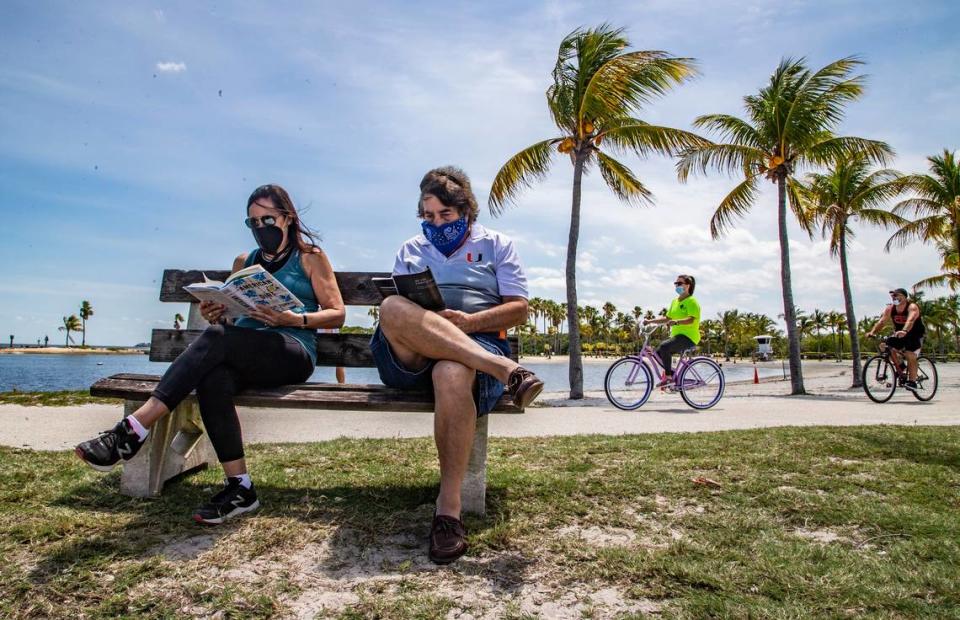Invasive plants, climate change degrade this Coral Gables park. Help is coming soon
Matheson Hammock Park, a beloved natural oasis in South Florida, is under threat and the menace hides in plain sight. Many visitors walk around admiring the vegetation that grows in the park, unaware that the majority of the plants are invasive, choking out local vegetation and wildlife.
Fourteen native plants have disappeared from the park. Many creatures that once thrived in the park have not been seen for years. Those animals include bobcats and the Florida purple wing butterfly.
Meanwhile, climate change is causing sea levels to rise, pushing saltwater into underground reserves that once stored freshwater for plants and animals.
Miami-Dade County has a plan and $5 million to try to tackle the problem. The money was awarded in equal parts from the Florida Department of Environmental Protection and the Miami-Dade County Biscayne Bay Trust.
The two-year restoration project is set to begin this summer. It’s a continuation of efforts to manage the environmentally endangered lands of the park. In 1990, the county partnered with the Nature Conservancy and Fairchild Tropical Botanic Garden to restore the ecologically sensitive areas such as the Snapper Creek Slough and mangrove habitats found within Matheson Hammock.
The park has been a popular destination for weekend family picnics and, thanks to its boat ramps, outings on Biscayne Bay. One popular destination within the park is the man-made atoll pool filled with water from Biscayne Bay. Visitors can also use the biking and hiking trails.
“This $5 million grant is gonna be the thing that brings this entire vision to fruition,” said James Duncan, project manager for the restoration.

The funds were split: $2 million going to coastal protection and restoration and $3 million to freshwater wetlands.
Matheson Hammock is home to diverse systems, including pine rocklands, hardwood hammocks, wetlands and mangrove forest, all of which will get some help.
Part of the work will involve restoring 400 acres of mangrove habitat.
“We’re going to remove the solid waste there, remove the fill piles, we’re going to upgrade that entire footprint to the proper elevation, and we’re going to plant on a mix of mangroves,” said Duncan.
In the 1930s, a canal was dug to prevent flooding of nearby houses, effectively draining the historic Snapper Creek Slough and drying up the area. Another goal of this restoration project is to install pumps to restore proper water flow and levels in the park.
Tree islands are elevated areas of land surrounded by wetlands, making them an important habitat for various plant and animal species. This area in the park has been particularly ravaged by invasive plants. A massive removal plan for these nonnatives is set along with the planting of native trees.
Matheson Hammock is ground zero for saltwater intrusion because of its proximity to the coastline, drainage canals and the looming threat of increasing sea rise. In order to make sure that the plants and animals have enough freshwater, the park will utilize intensive irrigation to push out saltwater.
The restoration project is projected to be finished by the summer of 2025. Because most of the work will be done on off-trail sites, the work is not expected to disrupt visitor amenities and activities.
Milena Malaver is a journalism student at FIU. This story was produced as part of a partnership between the Florida International University Lee Caplin School of Journalism & Media and the Miami Herald.

